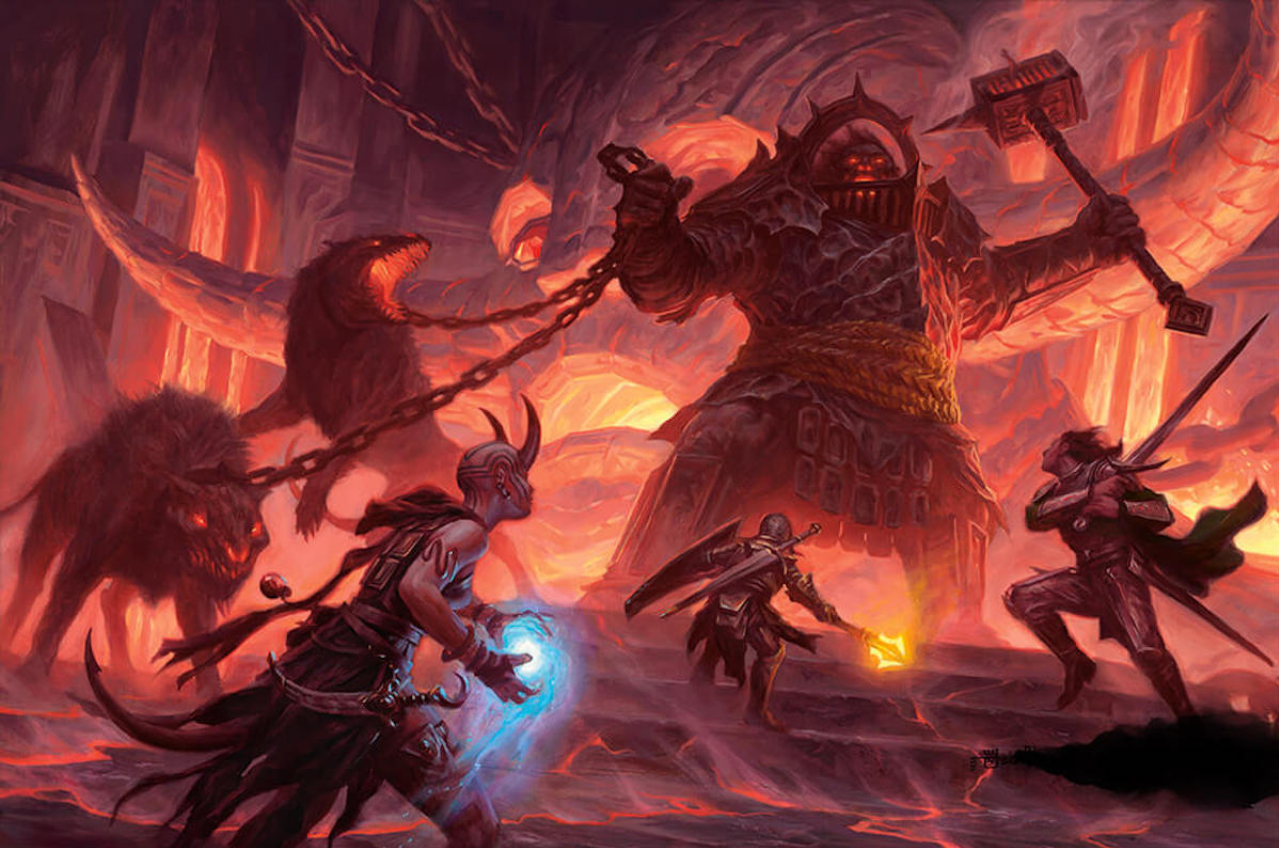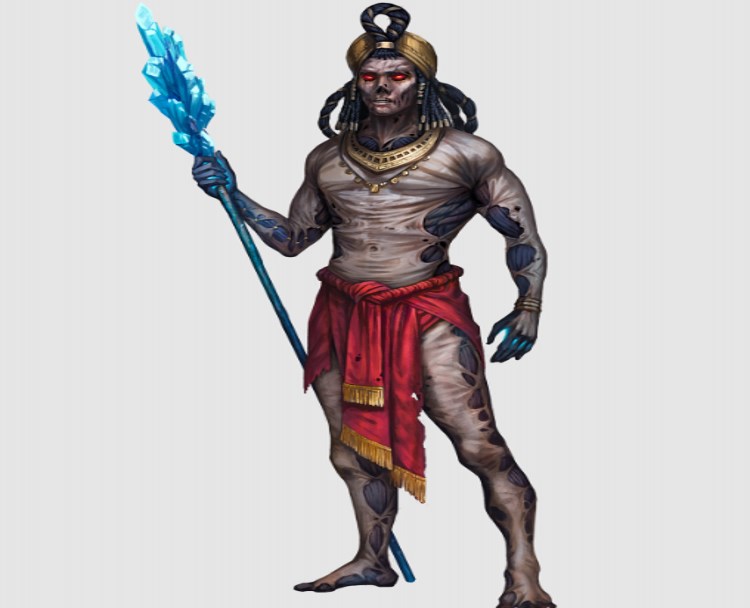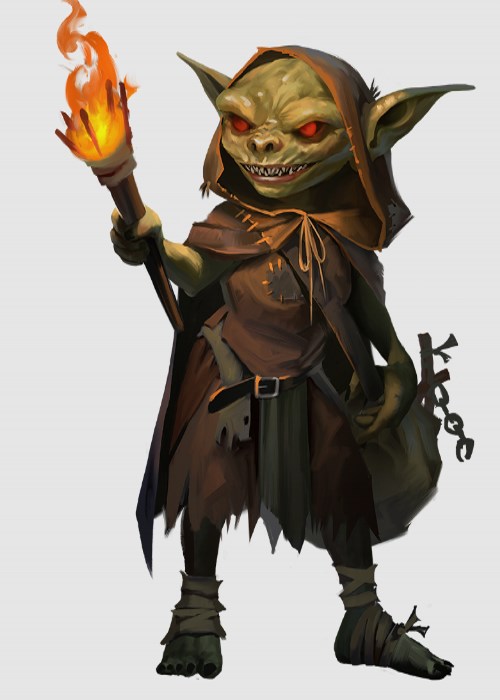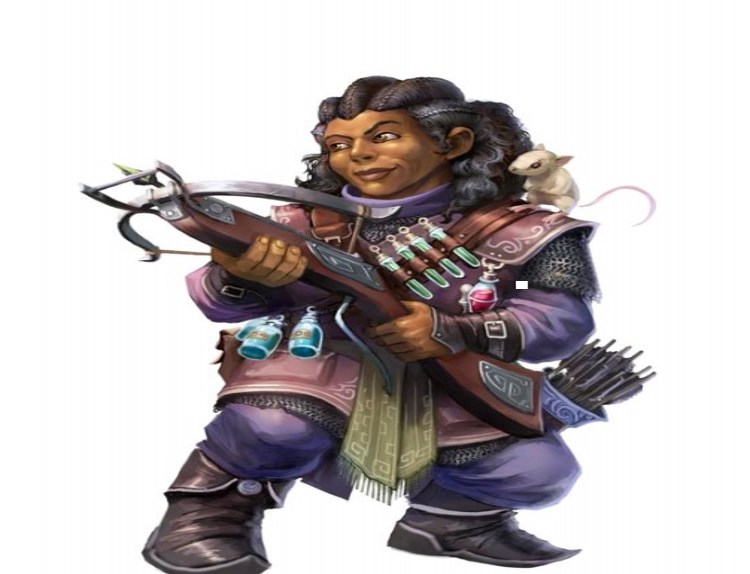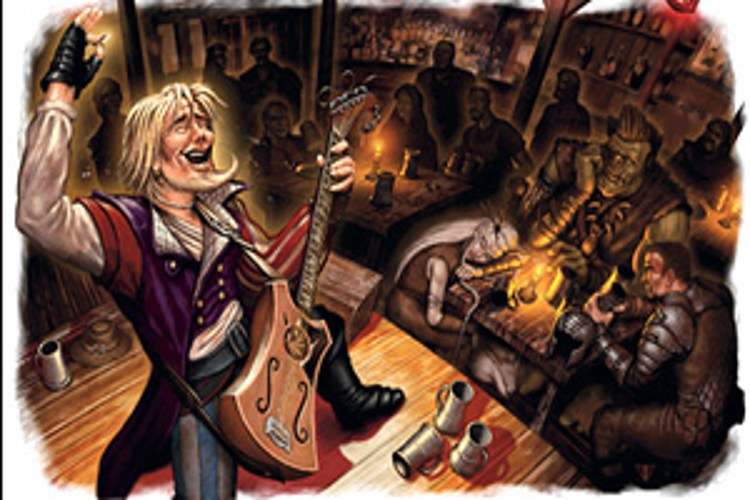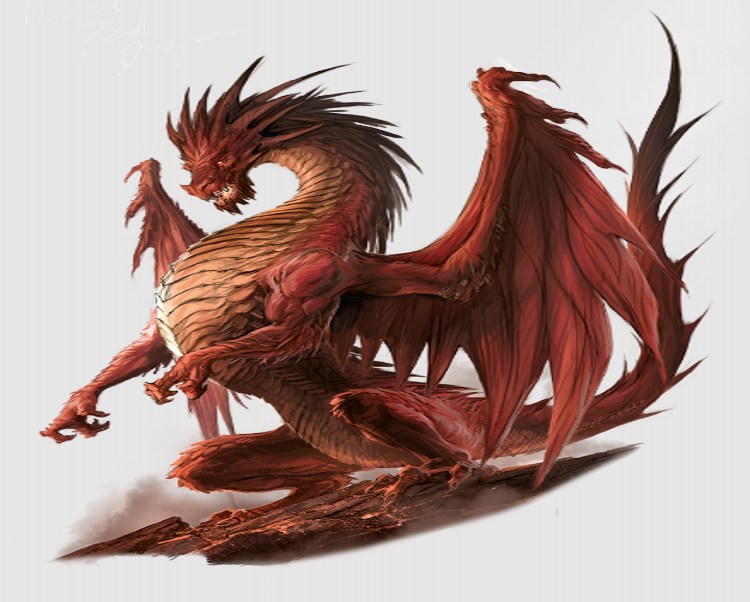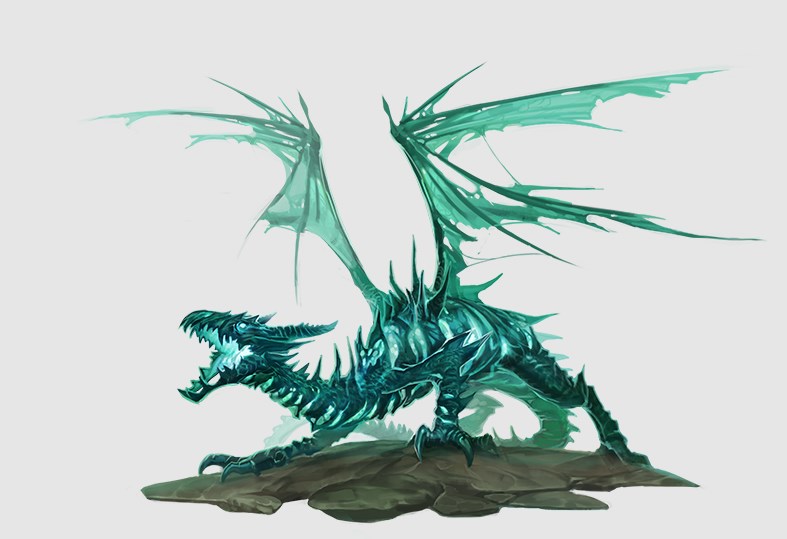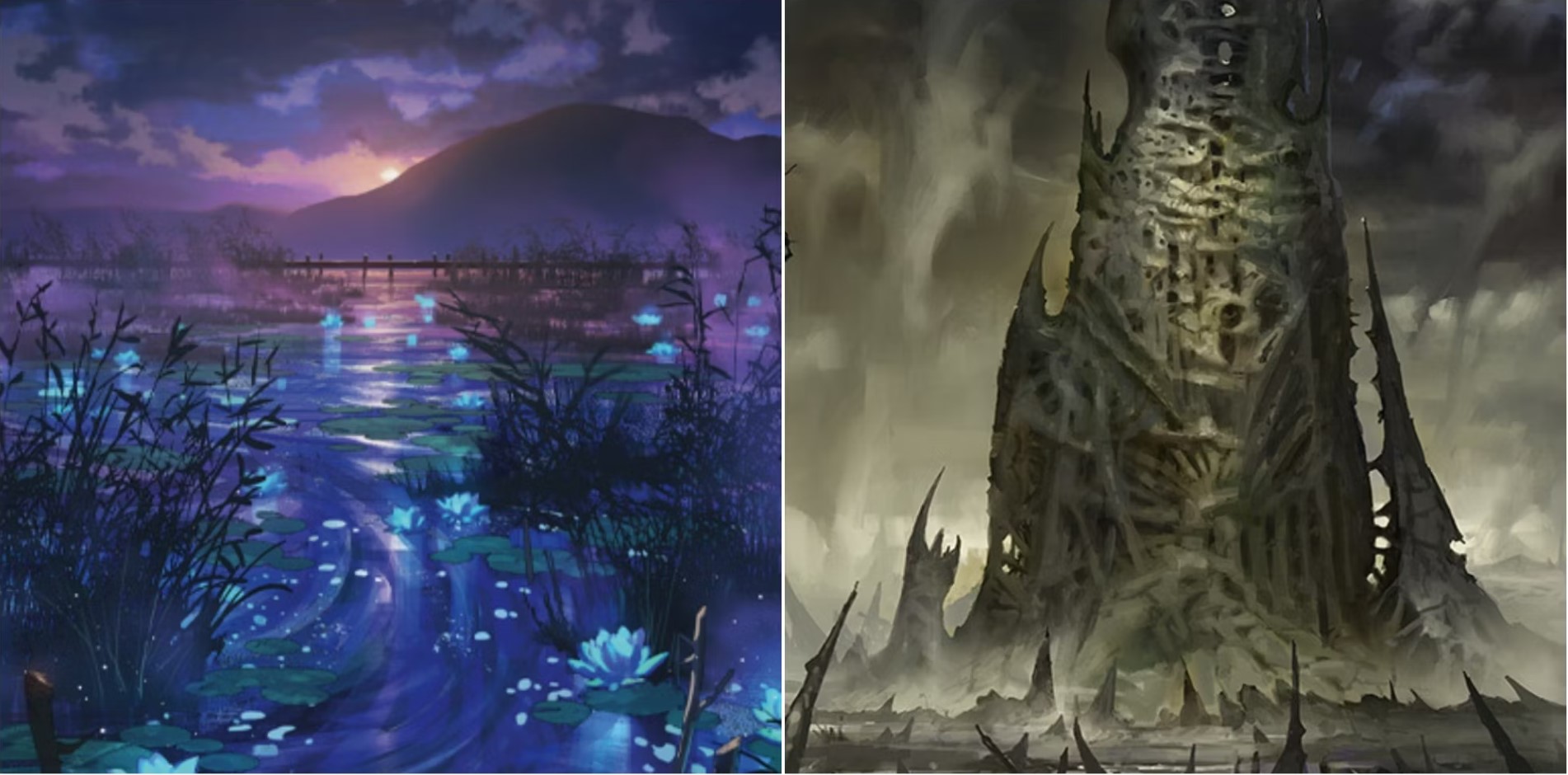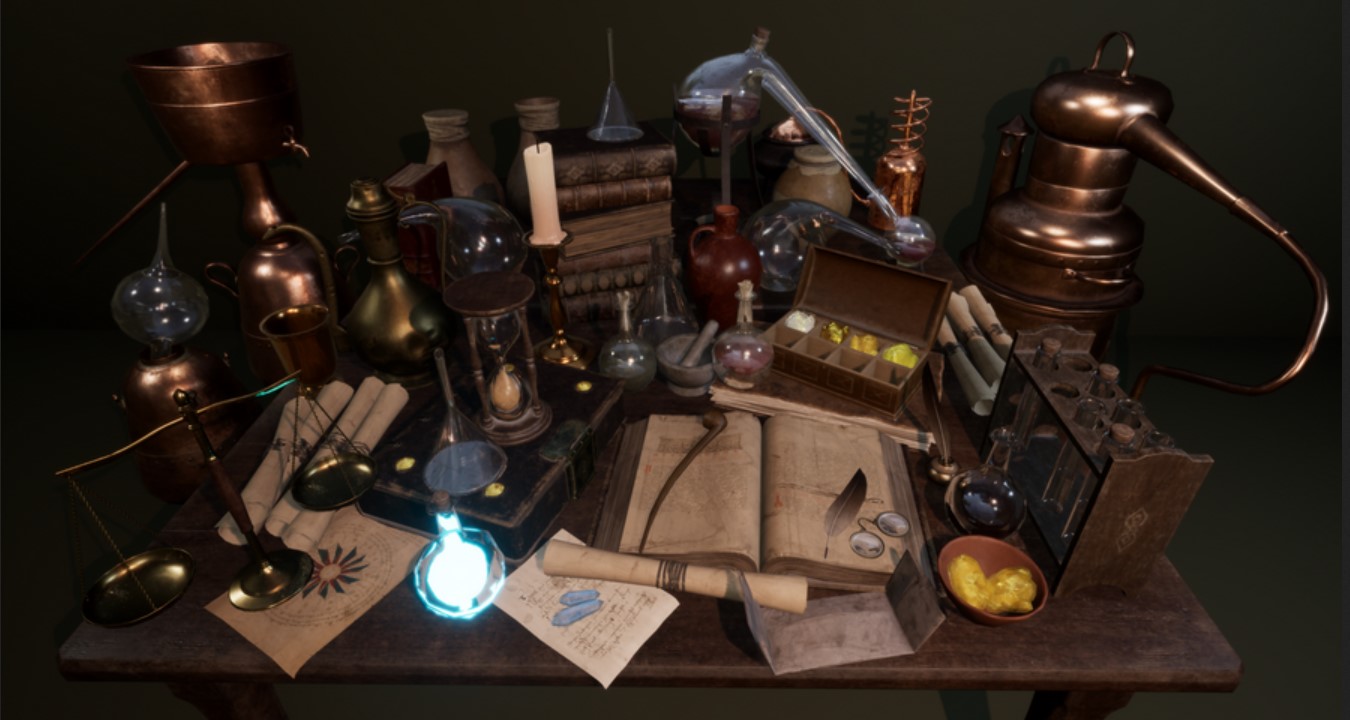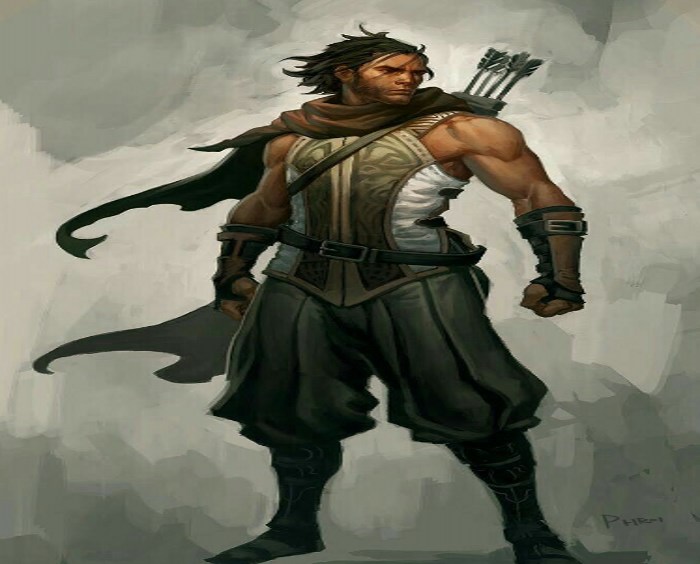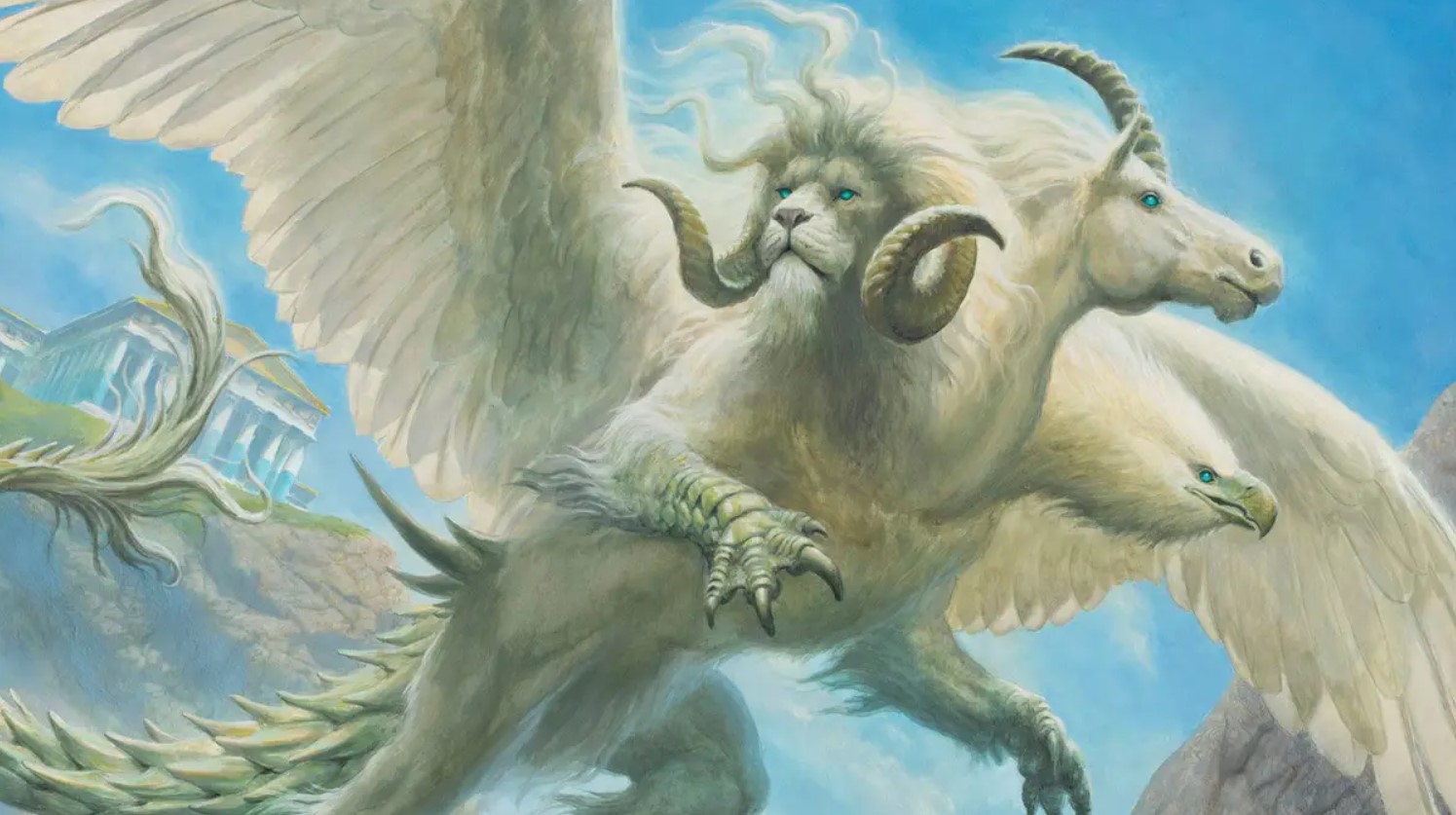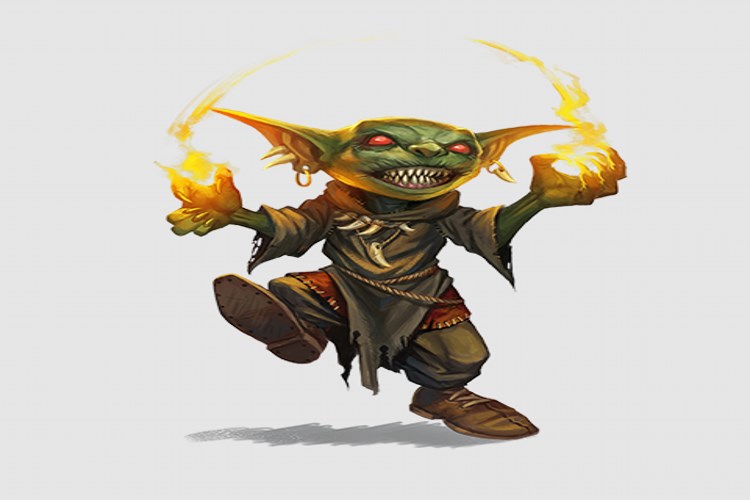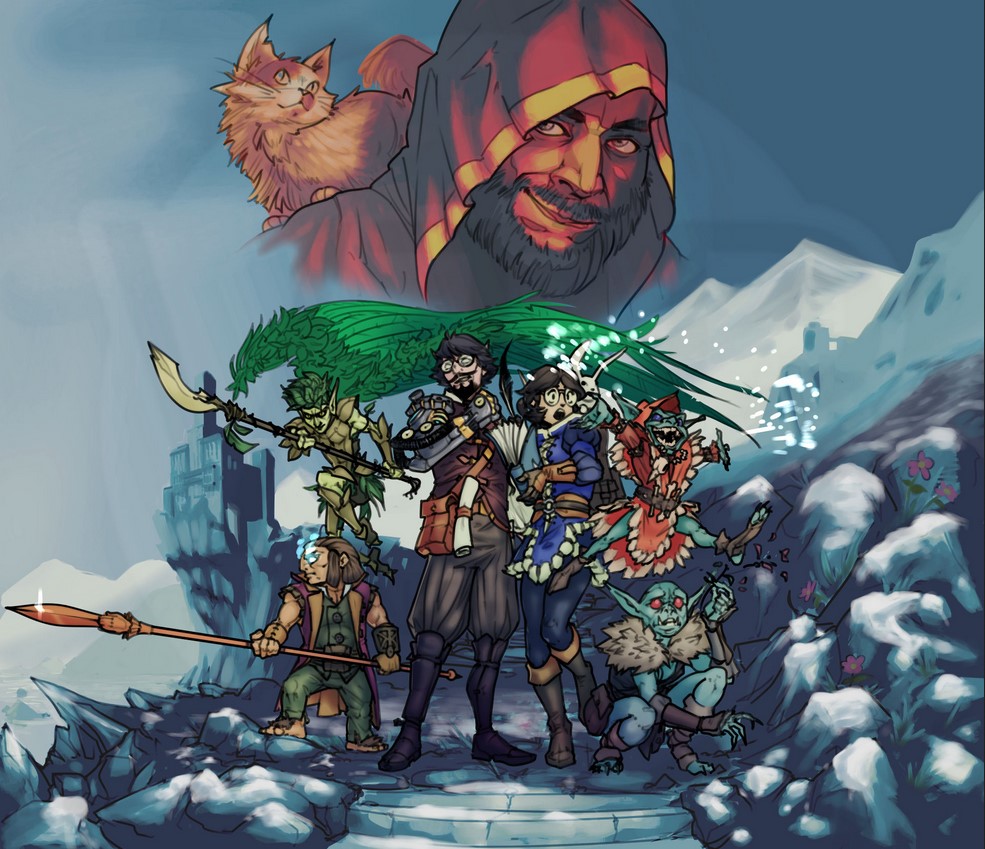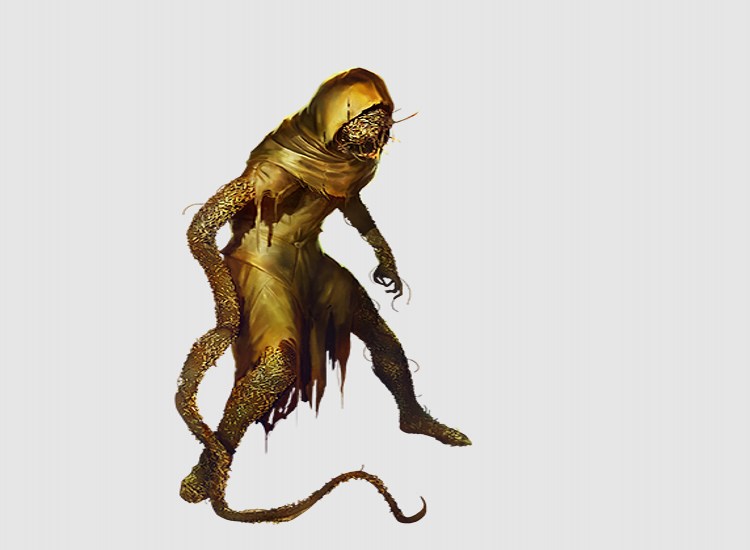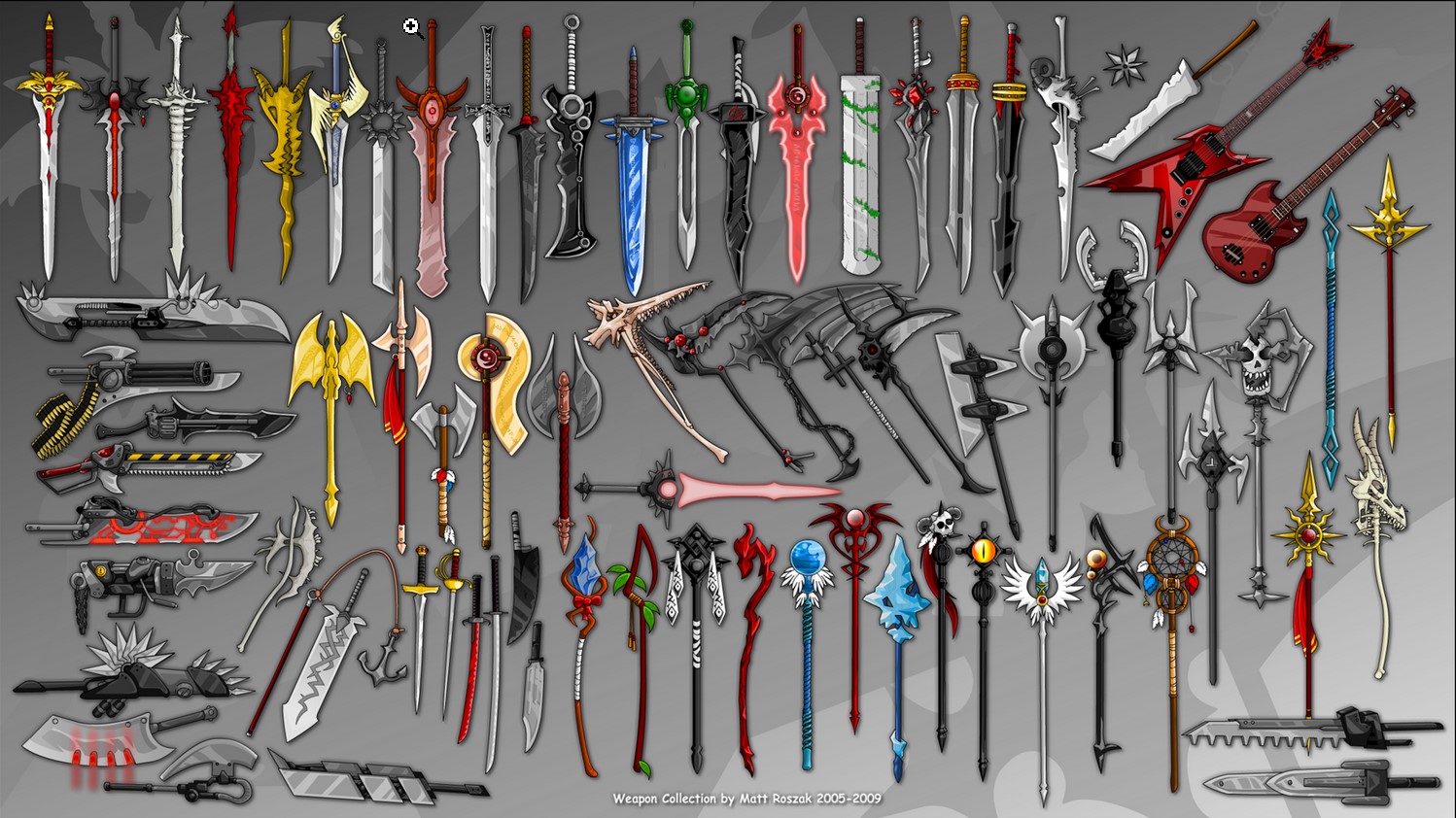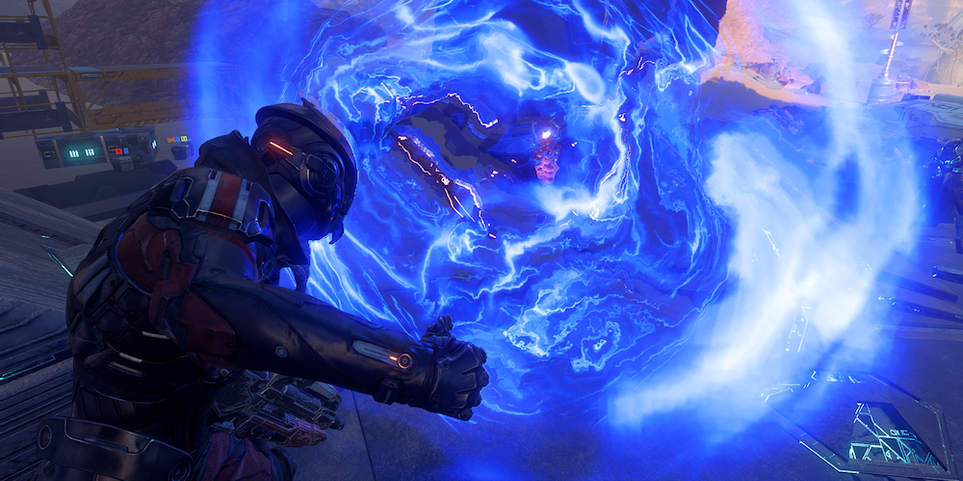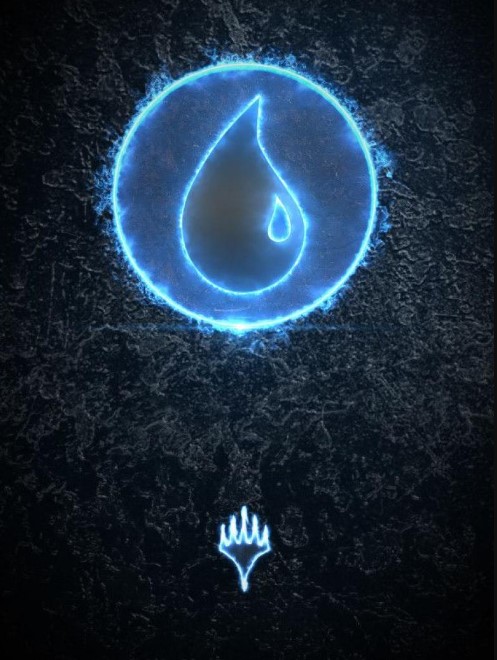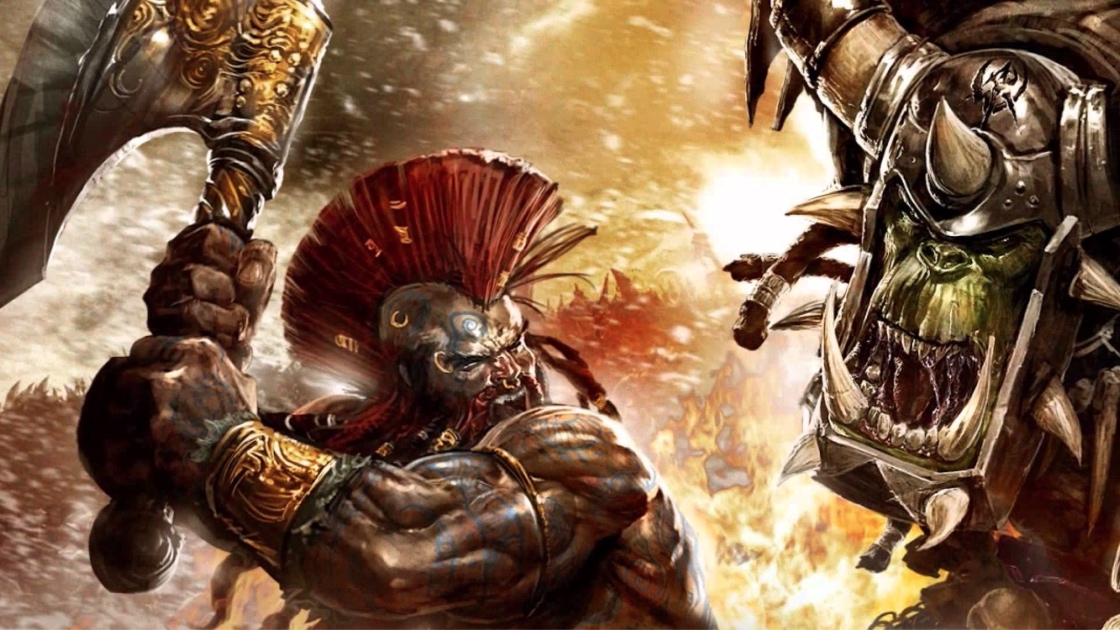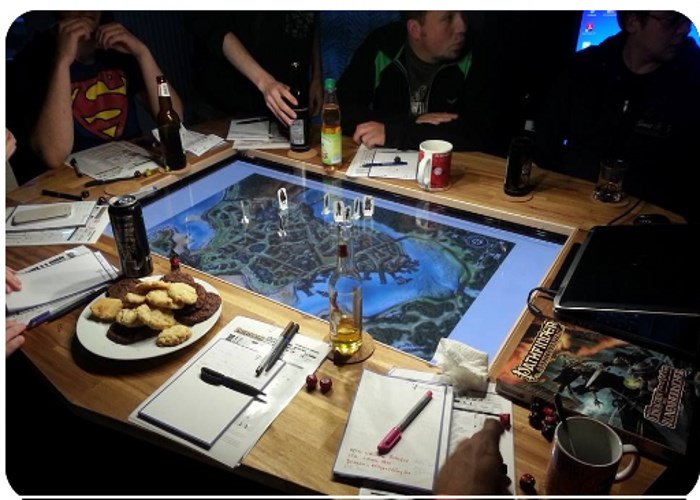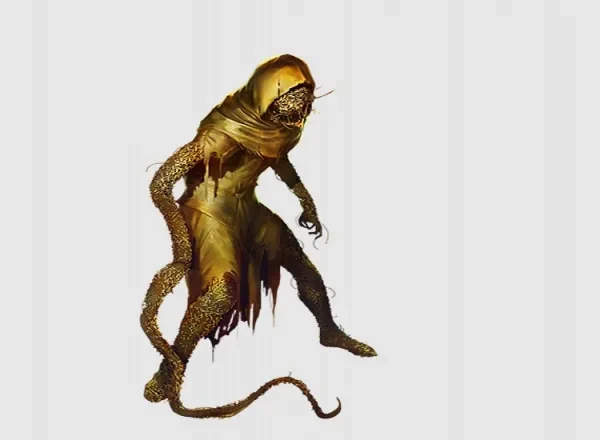
Fear is an essential part of any Pathfinder adventure. After all, if the monsters weren’t scary, it wouldn’t be fun. Here is a list of 10 scary monsters that will make your campaign interesting and nightmare-inducing
10 Black Pudding
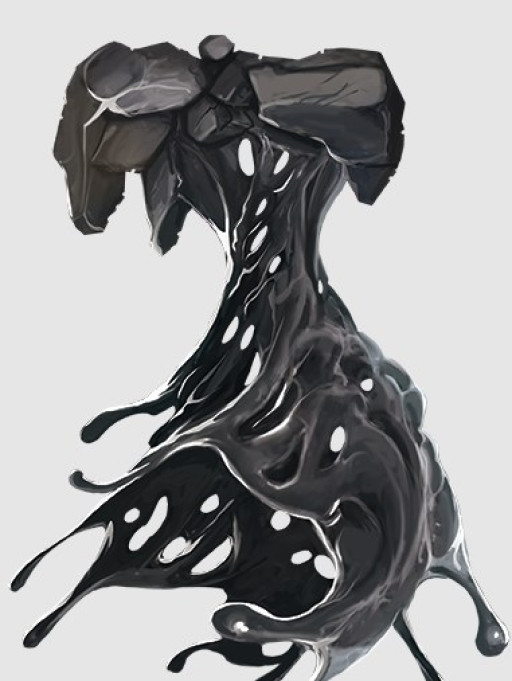
This mindless corrosive mass may sound appetizing but it can be a destructive force if the encounter isn’t ended quickly. This creature combines all the worst traits of oozes. It grapples players to suffocate them. It tries to damage their weapons and armor. But that’s not the worst part.
When a player attacks a Black Pudding, it splits. But it still does the same damage. It has all the same abilities. And it will keep splitting until there’s nothing left. And it does this on instinct.
There’s no controlling it and no reasoning with it. In close quarters, it’s a tough opponent. If the encounter takes too long, the party may be overwhelmed.
Black Pudding stats
- Level 7
- Perception +9; motion sense 60 feet, no vision
- Skills Athletics +18
- Str +7, Dex -5, Con +7, Int -5, Wis +0, Cha -5
- Motion Sense A black pudding can sense nearby motion through vibration and air movement.
- AC 14; Fort +18, Ref +6, Will +11
- HP 165; Immunities acid, critical hits, mental, piercing, precision, slashing, unconscious, visual
- Corrosive Mass A creature that hits the pudding with a metal or wooden weapon must succeed at a DC 22 Reflex save or the weapon takes 2d6 acid damage (after dealing damage to the black pudding as normal). Thrown weapons and ammunition take this damage automatically with no save.
- Split When the black pudding is hit by an attack that would deal slashing or piercing damage and has 10 or more HP, it splits into two identical puddings, each with half the original’s HP. One pudding is in the same space as the original, and the other appears in an adjacent unoccupied space. If no adjacent space is unoccupied, it automatically pushes creatures and objects out of the way to fill a space (the GM decides if an object or creature is too big or sturdy to push).
- Speed 20 feet, climb 20 feet; suction
- Melee pseudopod +18 [+13/+8] (reach 10 feet), Damage 2d8+7 bludgeoning plus 2d6 acid, corrosive touch, and Grab
- Constrict 1d8+7 bludgeoning plus 1d6 acid, DC 26
- Corrosive Touch When the pudding hits a creature with its pseudopod, any acid damage is dealt to the creature's armor or clothing as well as the creature.
- Suction The pudding can climb on ceilings and other inverted surfaces, though such surfaces are difficult terrain for it.
9. Faceless Stalkers
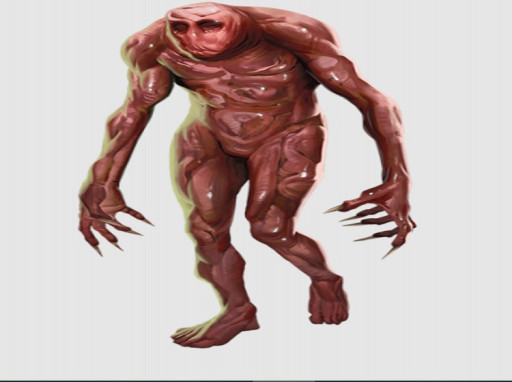
Serving forces alien and ancient, the Faceless Stalker brings a different fear to the table than a simple fear of death. A Faceless Stalker is tasked by their masters to infiltrate a society, pose as prominent people, and lead the society to its doom.
What makes this unnerving is not a Faceless Stalker’s combat power. Any sufficiently advanced party can mow them down. The issue is everything before the fight. You don’t know who is who. Are you talking to a kindly NPC or a monster? Are you feeding information to the Pathfinders or to the Stalker’s Veiled Masters?
Paranoia is a major element of horror. Faceless Stalkers exploit this masterfully. Dealing long enough with a Faceless Stalker can leave a party questioning everything they’ve done up to the point of discovering the truth.
Faceless Stalker stats:
- Level 4
- Perception +10; darkvision
- Languages Alghollthu, Aquan, Common; tongues
- Skills Acrobatics +12, Athletics +12, Deception +13, Stealth +13, Thievery +9
- Str +4, Dex +3, Con +3, Int +0, Wis +2, Cha +3
- Items longsword, studded leather armor
- AC 21; Fort +9, Ref +9, Will +12; +2 status to all saves vs. auditory and visual
- HP 60; Resistances bludgeoning 5
- Speed 25 feet
- Melee longsword +14 [+9/+4] (versatile P), Damage 1d8+6 slashing
- Melee claw +12 [+8/+4] (agile), Damage 2d6+6 slashing plus Grab
- Occult Innate Spells DC 19; Constant (5th) tongues
- Assume Form (concentrate, occult, polymorph, transmutation) The faceless stalker spends 10 minutes reshaping its appearance to take on the shape of any Small or Medium humanoid. It gains a +4 circumstance bonus to Deception checks to pass as that creature.
- Blood Nourishment The faceless stalker uses its three-pronged tongue to drink the blood of an adjacent restrained or unconscious creature. The creature gains drained 1.
- Compression When the faceless stalker successfully Squeezes, it moves through the tight space at full speed. Narrow confines are not difficult terrain for a faceless stalker.
- Revert Form Requirements The faceless stalker is in an assumed form. Effect The faceless stalker resumes its true form. Until the start of its next turn, it gains a +2 status bonus to attack rolls, damage rolls, saving throws, and skill checks.
- Sneak Attack The faceless stalker deals 1d6 extra precision damage to flat-footed creatures.
8. Skeletal Champions
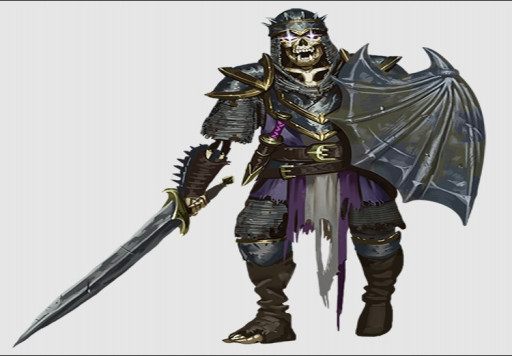
I know some people will probably disagree with me on this. However, I think there is a case to be made that this low-level monster can be scary when first encountered. Unlike goblins and random bandits a new party has faced, this skeleton is actually a credible threat.
This skeleton, unlike many of the undead the party faced before, is reasonably intelligent. It has many resistances. A lot of parties, particularly parties of new players that don’t know about resistances or party balance will find that the champion won’t go down easily. And there is something fearsome about a creature that won’t die. Add in some lesser skeletons or even another champion, it can become a major problem.
The skeletal champion is often the first sign that the campaign is getting serious. The comical goblins and mundane bandits are replaced with stronger adversaries. It is likely that a skeletal champion fight will be the party’s first brush with character death. It’s the first signal that they need to upgrade their equipment and have a spare weapon that can deal different types of damage.
Skeletal Champion stats
- Level 2
- Perception +8; darkvision
- Languages Common, Necril
- Skills Acrobatics +8, Athletics +8, Intimidation +7
- Str +4, Dex +4, Con +1, Int -1, Wis +2, Cha +1
- Items chain mail, lance, longsword, steel shield (Hardness 5, HP 20, BT 10)
- AC 19 (21 with shield raised); Fort +7, Ref +10, Will +6
- HP 25 (negative healing); Immunities death effects, disease, paralyzed, poison, unconscious; Resistances cold 5, electricity 5, fire 5, piercing 5, slashing 5
- Attack of Opportunity
- Shield Block
- Speed 25 feet
- Melee longsword +10 [+5/+0] (versatile P), Damage 1d8+4 slashing
- Melee claw +10 [+6/+2] (agile), Damage 1d6+4 slashing
- Melee lance +10 [+5/+0] (deadly d8, jousting d6, reach 10 feet), Damage 1d8+4 piercing
7. Tyrannosaurus Skeleton
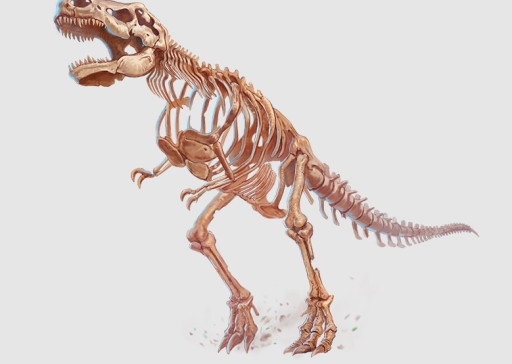
What can be worse than an intelligent skeleton? How about a Skeketal T-Rex? It may not be intelligent but it hits like a truck. And depending on the campaign, it could imply the party is dealing with someone strong enough to resurrect a T-Rex.
One thing that’s fierce about it is its size. It doesn’t have to move too far to get to the party because it has a 20-30 foot reach depending on the attack. It can grab an enemy with its jaws too. And it finds characters tasty.
The worst part is that it can impale a player. By bending down, this undead monstrosity can impale a hapless party member on its exposed ribs. And this is a bonus to the possibility of being trampled or eaten.
Tyrannosaurus Skeleton stats:
- Level 9
- Perception +17; darkvision
- Skills Athletics +22
- Str +7, Dex +0, Con +5, Int -5, Wis +2, Cha +0
- AC 27; Fort +20, Ref +13, Will +17
- HP 140 (negative healing); Immunities death effects, disease, mental, paralyzed, poison, unconscious; Resistances cold 10, electricity 10, fire 10, piercing 10, slashing 10
- Speed 40 feet
- Melee jaws +20 [+15/+10] (deadly d12, reach 20 feet), Damage 2d12+9 piercing plus Grab
- Melee foot +20 [+15/+10] (reach 15 feet), Damage 2d10+9 bludgeoning
- Rib Skewer The tyrannosaurus skeleton bends down, attempting to skewer one adjacent creature on one of its massive ribs. The creature takes 2d10+9 piercing damage (DC 28 basic Reflex save). If the creature fails its save and is Medium or smaller, it's also impaled and stuck to the rib. It moves with the skeleton and takes 2d6 persistent bleed damage until it either Escapes or someone uses Force Open to break the rib (either is DC 28).
- Trample Huge or smaller, foot, DC 28
6. Ghoul Antipaladin

Paladins fight for peace and justice. Antipaladins, not so much. They can be a scary problem for anything that gets in their way. Players are usually the anything. Very few antipaladins are scarier than the ghoul antipaladins.
Ghoul antipaladins have a lot of physical power. They have high defenses and high attack; They can use their Destructive Vengence ability to increase their damage (though at the expense of taking increased damage in return).
Their increase in accuracy creates another scarier problem. Ghouls have the ability to inflict paralysis. This renders characters helpless. In a fight with multiple opponents, this is a terrifying prospect. Players will need to increase their fortitude to survive an encounter with these guys.
Ghoul Antipaladin stats
- Level 9
- Perception +15; darkvision
- Languages Common, Necril
- Skills Acrobatics +18, Athletics +20, Intimidation +20, Kabriri Lore +18, Religion +18, Survival +18
- Str +6, Dex +4, Con +6, Int +1, Wis +4, Cha +4
- Items flail, full plate, heavy crossbow (20 bolts), steel shield (Hardness 5, HP 20, BT 10)
- AC 29 (31 with shield raised); Fort +21, Ref +15, Will +18
- HP 155 (negative healing); Immunities death effects, disease, paralyzed, poison, unconscious
- Destructive Vengeance Trigger The ghoul antipaladin takes damage from an enemy within 15 feet; Effect The ghoul antipaladin increases the amount of damage they take by 3d6, and they deal 3d6 damage to the triggering enemy, choosing evil or negative damage to deal to the enemy each time the antipaladin uses this reaction. In addition, the antipaladin deals 4 extra damage of the chosen type with their Strikes against the triggering creature until the end of the antipaladin's turn. An enemy damaged from the ghoul antipaladin's Destructive Vengeance also takes 4 persistent evil damage; this applies only to the damage the reaction itself deals to the triggering creature, not the damage the antipaladin deals with subsequent Strikes.
- Shield Block
- Speed 20 feet
- Melee jaws +19 [+14/+9], Damage 2d8+11 piercing plus ghoul fever and paralysis
- Melee claw +19 [+15/+11] (agile), Damage 2d6+9 slashing plus paralysis
- Melee flail +19 [+14/+9] (disarm, sweep, trip), Damage 2d10+13 bludgeoning
- Ranged heavy crossbow +19 [+14/+9] (range increment 120 feet, reload 2), Damage 2d8+11 piercing
- Champion Devotion Spells 1 Focus Point, DC 25; 5th touch of corruption
- Consume Flesh (manipulate) Requirements The ghoul antipaladin is adjacent to the corpse of a creature that died within the last hour; Effect The ghoul antipaladin devours a chunk of the corpse and regains 4d6 Hit Points. It can regain Hit Points from any given corpse only once.
- Ghoul Fever (disease) Saving Throw Fortitude DC 27; Stage 1 carrier with no effect (1 day); Stage 2 3d6 negative damage and regains half as many hit Points from all healing (1 day); Stage 3 as stage 2 (1 day); Stage 4 3d6 negative damage and gains no benefit from healing (1 day); Stage 5 as stage 4 (1 day); Stage 6 dead, and rises as a ghoul the next midnight
- Paralysis (incapacitation, occult, necromancy) Any living, non-elf creature hit by a ghoul antipaladin's attack must succeed at a DC 25 Fortitude save or become paralyzed. The creature can attempt a new save at the end of each of its turns, and the DC cumulatively decreases by 1 on each such save.
- Swift Leap (move) The ghoul antipaladin jumps up to half its Speed. This movement doesn't trigger reactions.
5. Vampire Mastermind

As far as the undead legions go, vampires are a bigger threat. But the vampire masterminds an even bigger problem. The masterminds have plenty of thralls to throw at a party. Many of them have the same powers they did in life. And to become a master you have to be reasonably powerful.
One of the major threats a mastermind poses is that they can’t be surprised. Any place a vampire lives is bound to have a number of bats everywhere. Once you enter the vampire’s domain, they know you’re there. If the encounter goes south, they can transform into a bat and fly away.
Should the Mastermind deem the party worthy of his time, a battle with him can be terrifying. He has the ability to cast dominate person. This can turn the party’s fighters against themselves. It would allow the Mastermind to destroy the party from within.
Vampire Mastermind stats:- Level 9
- Perception +20; darkvision
- AC 27; Fort +15, Ref +18, Will +20
- HP 115 (coffin restoration, fast healing 10, negative healing); Immunities death effects, disease, paralyze, poison, sleep; Resistances physical 10 (except magical silver); Weaknesses vampire weaknesses
- Mist Escape Trigger The vampire is reduced to 0 HP. Effect The vampire uses Turn to Mist. It can take move actions to move toward its coffin even though it’s at 0 HP. While at 0 HP in this form, the vampire is unaffected by further damage. It automatically returns to its corporeal form, unconscious, if it reaches its coffin or after 2 hours, whichever comes first.
- Speed 25 feet, climb 25 feet
- Melee claw +18 [+14/+10] (agile), Damage 2d8+9 slashing plus Grab
- Arcane Prepared Spells DC 29, attack +19; 4th fire shield, phantasmal killer, veil, wall of fire; 3rd dispel magic, fireball, haste, lightning bolt; 2nd flaming sphere, invisibility, mirror image, touch of idiocy; 1st color spray (x2), fleet step, ray of enfeeblement; Cantrips (4th) detect magic, mage hand, message, ray of frost, sigil
- Change Shape (concentrate, divine, polymorph, transmutation) Giant bat with fangs +19 for 2d8+9 piercing.
- Create Spawn (divine, downtime, necromancy) If a creature dies after being reduced to 0 HP by Drink Blood, the vampire can turn this victim into a vampire by donating some of its own blood to the victim and burying the victim in earth for 3 nights. If the new vampire is lower level than its creator, it is under the creator’s control. If a vampire controls too many spawn at once (as determined by the GM), strong-willed spawn can free themselves by succeeding at a Will saving throw against the vampire’s Will DC.
- Dominate (divine, enchantment, incapacitation, mental, visual) The vampire can cast dominate (DC 26) at will as a divine innate spell. Casting it requires staring into the target's eyes, giving the spell the visual trait. A creature that succeeds is temporarily immune to that vampire's Dominate for 24 hours. Fully destroying the vampire ends the domination, but merely reducing the vampire to 0 HP is insufficient to break the spell.
- Drain Bonded Item (arcane, wizard) Frequency Once per day. Requirements The vampire hasn’t acted yet on this turn. Effect The vampire expends the power stored in its signet ring. This gives the vampire the ability to cast one prepared spell it had already previously cast today, without spending a spell slot. The vampire must still Cast the Spell and meet the spell’s other requirements.
- Drink Blood (divine, necromancy) Requirement A grabbed, paralyzed, restrained, unconscious, or willing creature is within the vampire's reach. Effect The vampire sinks its fangs into that creature to drink its blood. This requires an Athletics check against the victim's Fortitude DC if the victim is grabbed and is automatic for any of the other conditions. The victim is drained 2 and the vampire regains 10 HP, gaining any excess HP as temporary Hit Points. Drinking Blood from a creature that's already drained doesn't restore any HP to the vampire but increases the victim's drain value by 1. A vampire can also consume blood that's been emptied into a vessel for sustenance, but it gains no HP from doing so.
- A victim's drained condition decreases by 1 per week. A blood transfusion, which requires a DC 20 Medicine check and sufficient blood or a blood donor, reduces the drain by 1 after 10 minutes.
- Steady Spellcasting If another creature’s reaction would disrupt the vampire mastermind’s spellcasting action, the vampire attempts a DC 15 flat check. If the vampire succeeds, its action isn’t disrupted.
- Turn to Mist (concentrate, divine, transmutation) The vampire turns into a cloud of vapor, as the gaseous form spell, or back to its normal form. The vampire loses fast healing while in gaseous form. The vampire can remain in this form indefinitely.
4. Worm that Walks
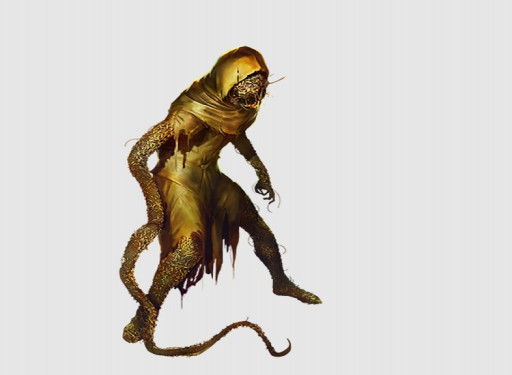
There are many ways a wizard can turn himself into an undead. One of the most bizarre and horrifying ways is becoming a Worm that Walks. The Eldritch magic takes the bugs that are eating the wizard’s decomposing body and turn them into a new body.
As gross as that sounds, it gets worse. When the Worm That Walks gets pushed to zero HP, it doesn’t simply die. The worms break apart and the party has to kill every single worm. If even one escapes, the creature can reform.
Now add on all the spells. Any wizard that can turn himself into this abomination has extremely powerful magic. He can summon any number of aberrations to join him Depending on the dungeon master, he might have some monsters summoned before you reach him. He also has phantasmal killer, which can kill party members instantly. Equal parts grotesque and horrifying, this abomination is not what you want to fight in the dark.
Worm that Walks Stats:
- Level 14
- Perception +25; darkvision, tremorsense (imprecise) 30 feet
- Languages Aklo, Common
- Skills Acrobatics +24, Deception +28, Intimidation +26, Occultism +27, Society +23, Stealth +28
- Str +5, Dex +8, Con +5, Int +5, Wis +4, Cha +8
- AC 36 all-around vision; Fort +23, Ref +28, Will +26
- HP 200 (fast healing 10); Immunities disease, paralyzed, poison, precision, swarm mind, unconscious; Resistances physical 10; Weaknesses area damage 10, splash damage 10
- Discorporate When the worm that walks is reduced to 0 HP, it discorporates and the component worms that make up its body disperse in every direction. If even a single worm escapes, the worm that walks will eventually re-form using a process that typically takes 1d10 days.
- While the exact circumstances and surroundings determine how long the worm that walks's foes have to dispatch the fleeing worms before they escape, usually its foes have only a single round. Typically, this requires the application of an area effect or splash weapon within 1 round to the space where the worm that walks collapsed. After any amount of area or splash damage is dealt to that space, the character dealing the damage must attempt a DC 15 flat check. Each subsequent area or splash damage effect performed on the area reduces the DC of this flat check by 2, to a minimum of DC 5. If any of these flat checks succeed, none of the worms escape, and the worm that walks is destroyed permanently. At the GM's discretion, clever means of trapping or otherwise detaining the vermin may extend the time allowed to finish off the worm that walks.
- Speed 30 feet
- Melee tendril +29 [+24/+19] (reach 10 feet), Damage 4d8+14 persistent piercing damage
- Occult Spontaneous Spells DC 34, attack +26; 7th phantasmal killer, visions of danger, warp mind (3 slots); 6th dispel magic, dominate, paranoia, summon entity (4 slots); 5th black tentacles, mind probe, phantom pain, subconscious suggestion (4 slots); 4th dimension door, modify memory, suggestion, veil (4 slots); 3rd dream message, haste, hypercognition, slow (4 slots); 2nd comprehend language, illusory creature, mirror image, undetectable alignment (4 slots); 1st charm, illusory disguise, mindlink, ray of enfeeblement (4 slots); Cantrips (7th) daze, detect magic, light, mage hand, shield
- Squirming Embrace The worm that walks Strides, ending its movement sharing a space with a creature, and deals 5d8 piercing damage to the creature. The creature can attempt a DC 32 basic Reflex save.
- Swarm Shape (concentrate) The worm that walks collapses into a shapeless swarm of worms. It drops all held, worn, and carried items. While discorporated, the worm that walks can't use attack actions and can't cast spells, but it can move through areas small enough for its individual worms to fit without having to Squeeze. It can use the same action to coalesce back into its normal form.
3. Shining Child

Some people would have you believe that light is inherently good. Anyone who has ever stared down a Shining Child would disagree. Birthed from extraplanar explosions, the Shining Children are resentful at the world and want to take their rage out on everyone. Usually by attacking people or using promises of eldritch knowledge to manipulate sumoners into doing their dirty work for them.
Shining Children are fierce creatures that use powerful magic. Upon seeing them, it is possible for characters to go permanently blind due to the light. The Shining Child can also use powerful magic. Sunburst is a powerful fire spell that can deal up to 80 damage.
The Shining Children are frightening combatants, Able to use fire rays as normal attacks, they can do serious damage to any party that isn’t prepared for a magic fight. Dealing with more than one of these creatures may mean fighting through a lot of fire and dealing with a lot of damage.
Shining Child Stats:
- Level 12
- Perception +23; darkvision
- Languages Aklo; telepathy 120 feet
- Skills Arcana +18, Deception +23, Diplomacy +21, Intimidation +21, Occultism +18
- Str +2, Dex +5, Con +6, Int +2, Wis +5, Cha +7
- Radiance Dependence The shining child is flat-footed while in areas of darkness.
- AC 33; Fort +22, Ref +19, Will +19
- HP 215; Immunities blinded, dazzled, fire
- Blinding Aura (arcane, aura,incapacitation, light) 60 feet. The shining child sheds bright light. Any creature that starts its turn in the aura must succeed at a Fortitude DC 29 save. If it fails, it is blinded for 1 minute, and if it critically fails, it’s permanently blinded. A creature that succeeds at its save is temporarily immune to this effect for 24 hours.
- Overwhelming Light (light) Trigger The shining child enters an area of magical darkness or begins its turn in an area of magical darkness. Effect The shining child attempts to counteract the magical darkness (as a 7th-level spell).
- Speed 30 feet, fly 50 feet
- Melee fist +25 [+21/+17] (agile, finesse, magical), Damage 3d4+5 bludgeoning plus 4d6 fire and 2d4 persistent fire
- Melee fire ray +25 [+20/+15] (arcane, evocation, magical, range 100 feet), Damage 3d10+3 fire, plus 2d10 positive damage if the target is undead
- Occult Innate Spells DC 33; 7th spell turning, sunburst; 6th dispel magic, vibrant pattern, wall of force; 5th dimension door, false vision, hallucinatory terrain; 4th dimension door (at will; self only); 2nd illusory object (at will); Cantrips (6th) light
2. Veiled Masters

The Veiled Masters are shapeshifters who uplifted human society for their own nefarious ends. They helped forge the Azlanti Empire and guided them into magical research of questionable ethics. However, when the Azlanti Empire and other civilizations started asking too many questions or started rebelling outright, the Veiled Masters summoned a meteor and tried to destroy the world. Though humanity survived, the Veiled Masters rule the deep seas with many servants. Including the Faceless Stalkers.
Veiled Masters are far more powerful than their Faceless Stalker counterparts. Their melee attacks are stronger and far more accurate. They emit a slime that can drain your maximum HP. They can even consume memories. But physical prowess isn’t what makes the Veiled Masters terrifying.
Masters of illusion and enchantment, they can make characters see things that are not there. They can hypnotize and dominate party members and turn them against each other. Destroying people from within is the specialty of the Veiled Master. They can cast spells and wait until they are in a better position to attack physically. They’ve been patient enough to wait for millions of years.
Veiled Master stats:
- Level 14
- Perception +25; darkvision
- Languages Aklo, Alghollthu, Aquan, Common, Undercommon; tongues
- Skills Arcana +27, Athletics +24, Deception +28, Intimidation +26, Lore +29 (any one subcategory), Occultism +29, Society +27, Stealth +24
- Str +6, Dex +6, Con +8, Int +7, Wis +5, Cha +6
- Mucus Cloud (aura, disease) 30 feet. While underwater, a veiled master exudes a cloud of transparent slime. An air-breathing creature within 30 feet of a veiled master must succeed at a DC 36 Fortitude save each round or lose the ability to breathe air but gain the ability to breathe water for 24 hours.
- AC 34; Fort +26, Ref +22, Will +24; +2 status to all saves vs. magic
- HP 270; Immunities controlled, electricity, mental ; Resistances cold 20
- Speed 10 feet, swim 80 feet
- Melee claw +30 [+26/+22] (agile, magical, reach 20 feet), Damage 3d10+12 slashing plus slime
- Melee fangs +28 [+24/+20] (agile, magical, reach 10 feet, versatile S), Damage 3d8+12 piercing plus slime and consume memories
- Melee tentacle +28 [+24/+20] (agile, electricity, magical, reach 20 feet), Damage 7d6 electricity plus thoughtlance
- Occult Innate Spells DC 37; 9th project image (at will); 8th illusory scene (at will), suggestion (x3); 7th veil (at will); 6th dominate (x3); 5th dimension door (x3), hallucinatory terrain (at will), illusory object (at will); 3rd hypnotic pattern (at will), levitate (at will), mind reading (at will), secret page (at will); Constant (5th) tongues
- Occult Rituals DC 37; 5th geas
- Change Shape (concentrate, occult, polymorph, transmutation) Once per round, a veiled master can take on the appearance of a humanoid of Large, Medium, or Small size or resume its true form. While in humanoid form, the veiled master’s Speed is 30 feet, and it loses its mucus cloud aura and swim Speed. If the humanoid form assumed lacks the aquatic trait, the veiled master loses its own aquatic trait as well. In humanoid form, the veiled master can use weapons, or it can make Strikes that work like its tentacle attack but use the reach of its current form. If the assumed form has fangs or claws, the veiled master can also make such Strikes, but these attacks lack the veiled master’s slime.
- Consume Memories (mental, occult) When a veiled master makes a fangs Strike against a creature, it can consume some of that creature’s memories. The target must succeed at a DC 37 Fortitude saving throw or become stupefied 1. A veiled master regains 5 Hit Points each time it successfully consumes memories. When a veiled master consumes memories, it learns some of the creature’s memories (subject to the GM’s discretion).
- Delayed Suggestion (enchantment, occult) When a veiled master successfully casts dominate on a creature, a suggestion spell triggers when the dominate spell ends. This suggestion usually causes the target to return to the veiled master, so the creature can cast dominate again, but a veiled master can set the suggestion to different orders if it wishes.
- Slime (curse, occult, virulent) Saving Throw Fortitude DC 36; Stage 1 no ill effect (1 round); Stage 2 the victim’s skin softens, inflicting drained 1 (1 round); Stage 3 the victim’s skin transforms into a clear, slimy membrane, inflicting drained 2 until the curse ends; every hour this membrane remains dry, the creature’s drained condition increases by 1 (permanent). A remove disease spell can counteract this curse, but immunity to disease offers no protection against it.
- Tentacle Flurry The veiled master thrashes about with its tentacles. Make a tentacle Strike against each creature within its reach. Roll only one attack roll, and roll the damage only once for all targets.
- Thoughtlance (curse, enchantment, occult) A creature touched by the veiled master’s tentacles, whether those tentacles deal damage or not, must attempt a DC 34 Will save, becoming slowed 1 on a failure or slowed 2 on a critical failure. Each time the affected creature ends its turn, its slowed value decreases by 1.
1. Ancient Red Dragon

(Image credit: Paizo)
As far as terrifying monsters go, few can beat an Ancient Red Dragon. Seen as the ultimate test for many adventuring parties, this dragon won’t go down easily and he can be terrifying for many reasons.
First of all, you’re dealing with a giant flying tank that breathes fire over a long range. If a party likes to stick close together, that can be a major liability. It has multiple ways to attack if the fire breath is not ready. Every part of its body is a weapon.
Plus, it can fly and do fly-by attacks. This dragon, given enough space, grab a character, fly up into the sky and hurl them to the ground. Being carnivorous, they can also potentially eat characters. Fighting a dragon and getting out alive will be a major challenge.
- Level 19
- Perception +35
- Languages Abyssal, Common, Draconic, Dwarven, Jotun, Orcish
- Skills Acrobatics +30, Arcana +35, Athletics +37, Deception +35, Diplomacy +35, Intimidation +37, Stealth +33
- Str +9, Dex +5, Con +8, Int +5, Wis +6, Cha +7
- Smoke Vision Smoke doesn’t impair a red dragon’s vision; it ignores the concealed condition from smoke.
- AC 45; Fort +35, Ref +32, Will +35; +1 status to all saves vs. magic
- HP 425; Immunities fire, paralyzed, sleep; Weaknesses cold 20
- Dragon Heat (arcane, aura, evocation, fire); 10 feet, 4d6 fire damage (DC 39 basic Reflex)
- Frightful Presence (aura, emotion, fear, mental) 90 feet, DC 40
- Attack of Opportunity Jaws only.
- Redirect Fire (abjuration, arcane); Trigger A creature within 100 feet casts a fire spell, or a fire spell otherwise comes into effect from a source within 100 feet. Effect The dragon makes all the choices to determine the targets, destination, or other effects of the spell, as though it were the caster.
- Speed 60 feet, fly 180 feet
- Melee jaws +37 [+32/+27] (fire, magical, reach 20 feet), Damage 4d10+17 piercing plus 3d6 fire
- Melee claw +37 [+33/+29] (agile, magical, reach 15 feet), Damage 4d8+17 slashing
- Melee tail +35 [+30/+25] (magical, reach 25 feet), Damage 4d10+15 slashing
- Melee wing +35 [+31/+27] (agile, magical, reach 20 feet), Damage 3d8+15 slashing
- Arcane Innate Spells DC 42; 8th wall of fire (at will); 4th suggestion (at will); Cantrips (9th) detect magic, read aura
- Breath Weapon (arcane, evocation, fire) The dragon breathes a blast of flame that deals 20d6 fire damage in a 60-foot cone (DC 42 basic Reflex save). It can’t use Breath Weapon again for 1d4 rounds.
- Draconic Frenzy The dragon makes two claw Strikes and one wing Strike in any order.
- Draconic Momentum The dragon recharges its Breath Weapon whenever it scores a critical hit with a Strike.
- Manipulate Flames (arcane, concentrate, transmutation) The red dragon attempts to take control of a magical fire or a fire spell within 100 feet. If it succeeds at a counteract check (counteract level 10, counteract modifier +32), the original caster loses control of the spell or magic fire, control is transferred to the dragon, and the dragon counts as having Sustained the Spell with this action (if applicable). The dragon can choose to end the spell instead of taking control, if it chooses.
- the targets, destination, or other effects of the spell, as though it were the caster.
- Speed 60 feet, fly 180 feet
- Melee jaws +37 [+32/+27] (fire, magical, reach 20 feet), Damage 4d10+17 piercing plus 3d6 fire
- Melee claw +37 [+33/+29] (agile, magical, reach 15 feet), Damage 4d8+17 slashing
- Melee tail +35 [+30/+25] (magical, reach 25 feet), Damage 4d10+15 slashing
- Melee wing +35 [+31/+27] (agile, magical, reach 20 feet), Damage 3d8+15 slashing
- Arcane Innate Spells DC 42; 8th wall of fire (at will); 4th suggestion (at will); Cantrips (9th) detect magic, read aura
- Breath Weapon (arcane, evocation, fire) The dragon breathes a blast of flame that deals 20d6 fire damage in a 60-foot cone (DC 42 basic Reflex save). It can’t use Breath Weapon again for 1d4 rounds.
- Draconic Frenzy The dragon makes two claw Strikes and one wing Strike in any order.
- Draconic Momentum The dragon recharges its Breath Weapon whenever it scores a critical hit with a Strike.
- Manipulate Flames (arcane, concentrate, transmutation) The red dragon attempts to take control of a magical fire or a fire spell within 100 feet. If it succeeds at a counteract check (counteract level 10, counteract modifier +32), the original caster loses control of the spell or magic fire, control is transferred to the dragon, and the dragon counts as having Sustained the Spell with this action (if applicable). The dragon can choose to end the spell instead of taking control, if it chooses.
You may also be interested in:
- Pathfinder: 15 Boss Monsters For Adventurers To Defeat
-
Pathfinder: 15 Dungeon Monsters That Make Campaigns More Interesting
Pathfinder: How To Be a Good Game Master |


